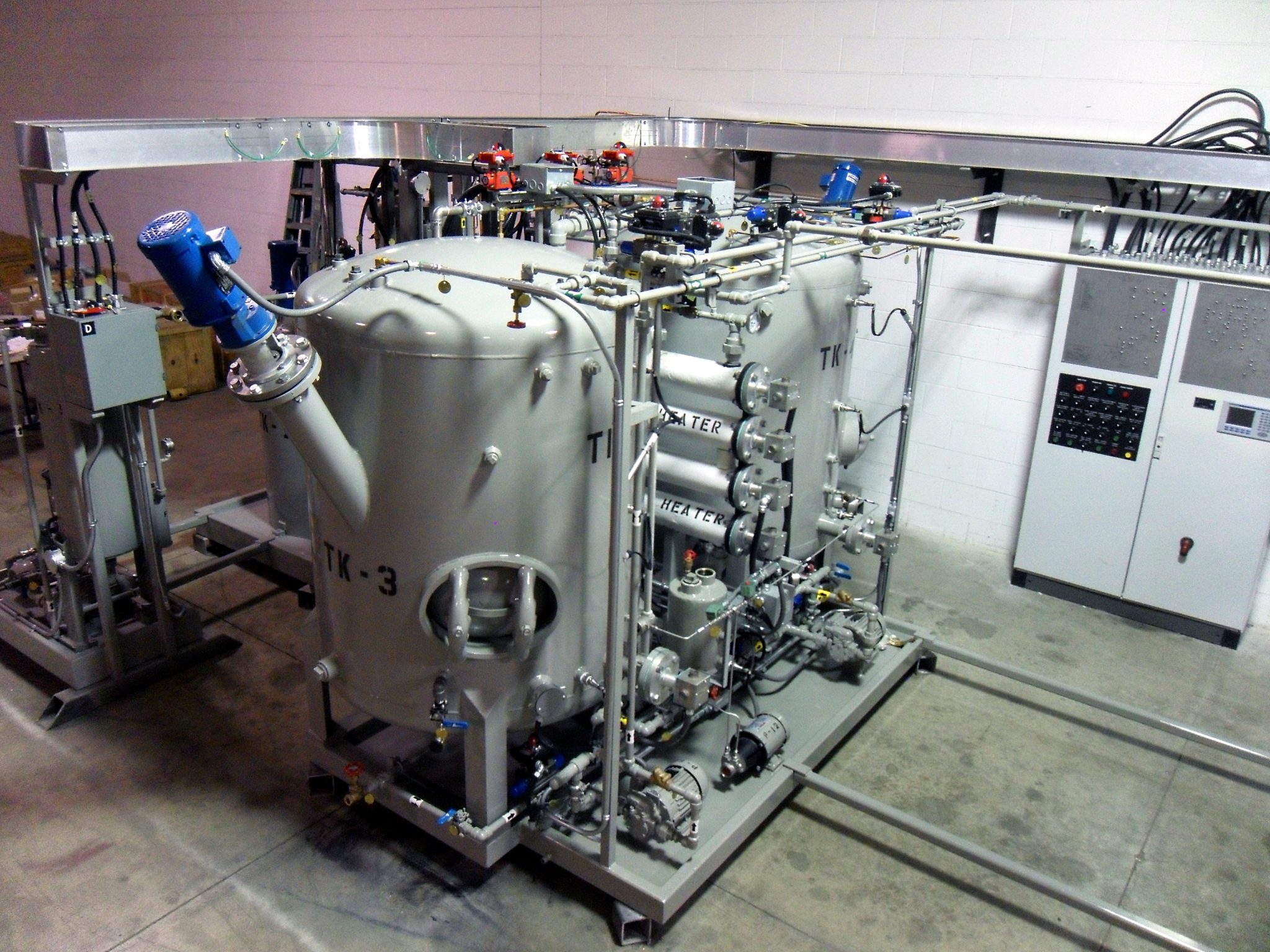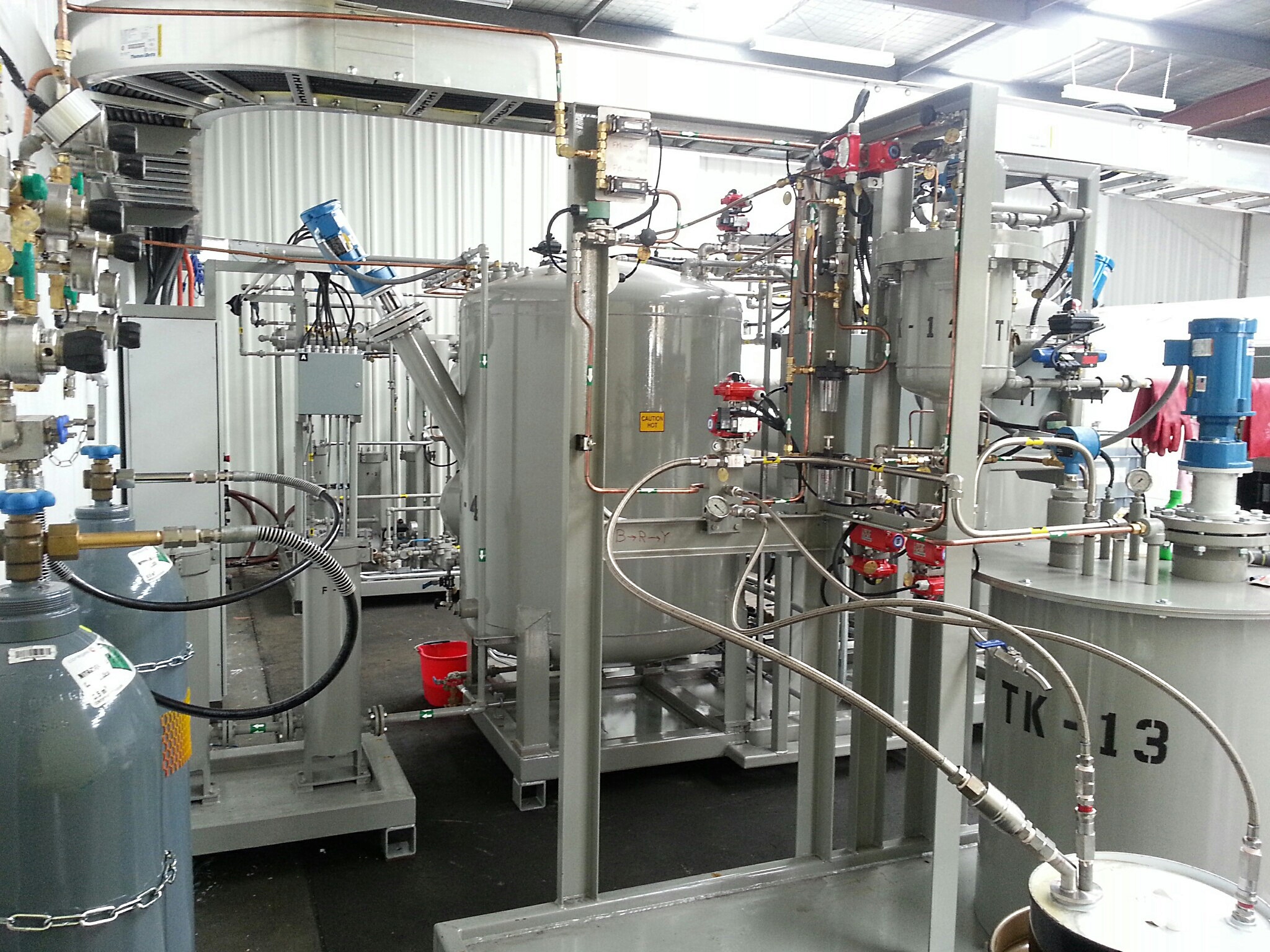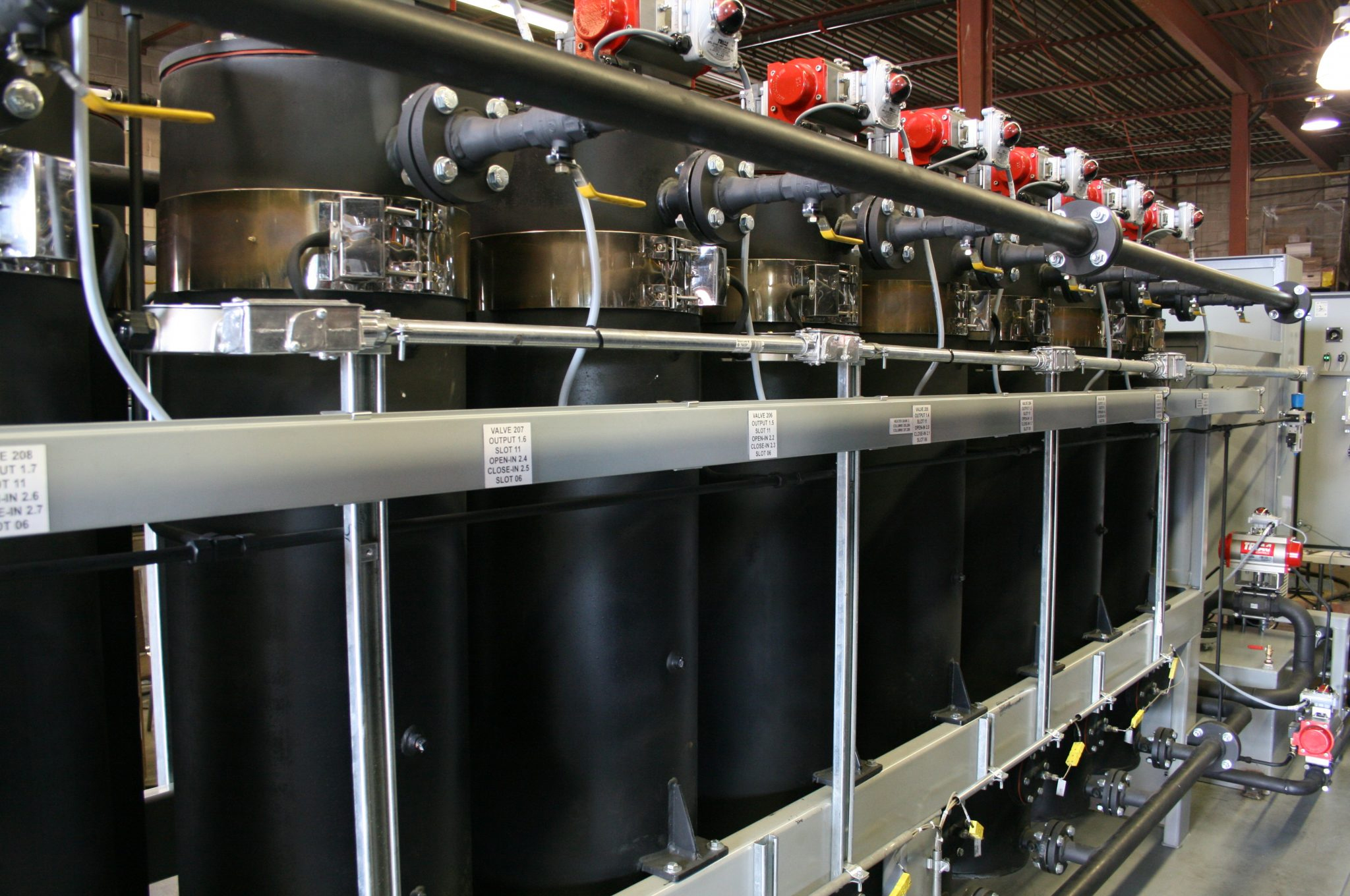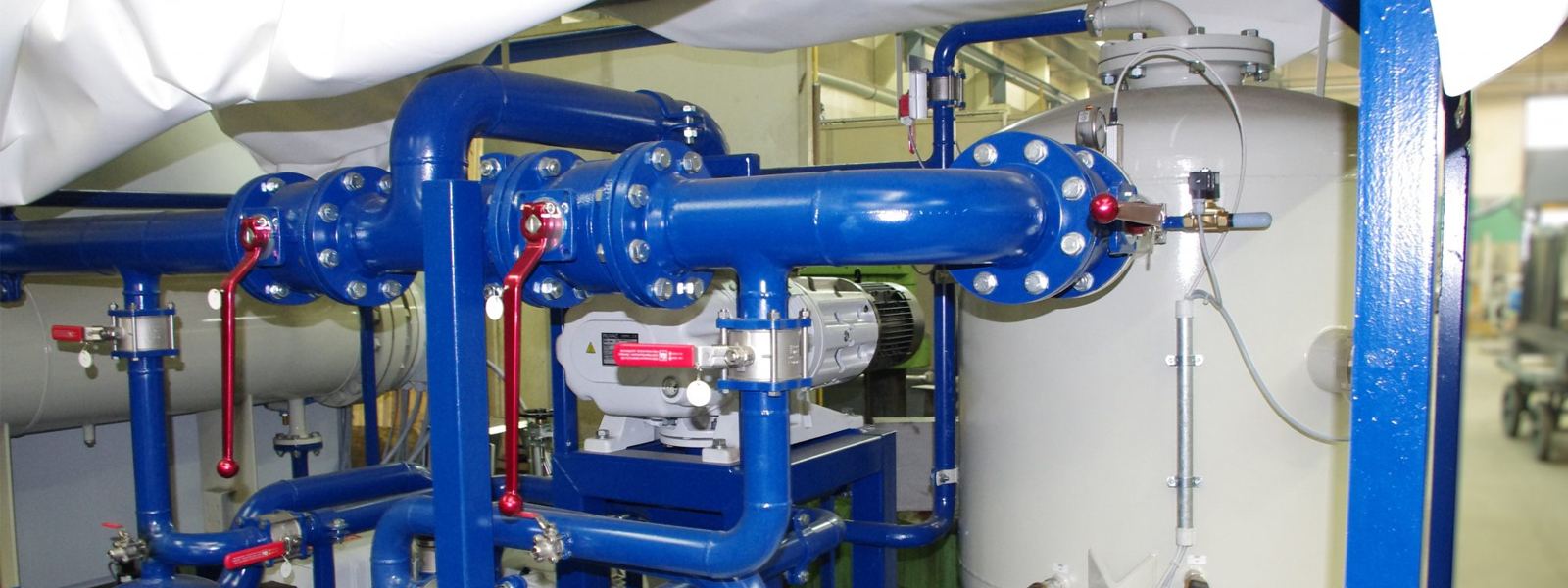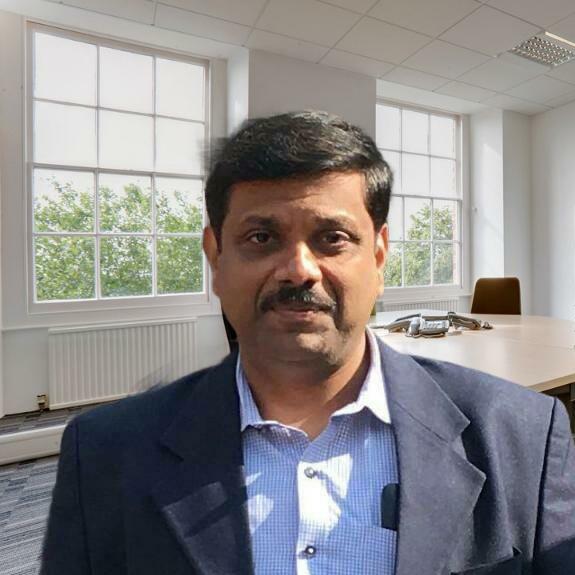PCB-RS Series – PCB Removal System
Our HERING PCB-RS PCB Removal System helps you to purify and recommission any PCB contaminated transformer oil. The combination of the initial dehalogenation stage of the HERING PCB-RS system with the successive regenerating stage leads to a PCB-free transformer oil of the highest quality. The HERING PCB-RS PCB dechlorination system uses our HERING DEHALO alkali dispersion to chemically strip the chlorine atoms from the other molecules to form PCB-free transformer oil and an easily separable PCB-free sludge which can be disposed as regular non-PCB industrial waste. The resulting transformer oil is free from contaminants and ready to be used as the insulating fluid of your transformers. An added benefit of the PCB-RS PCB Dechlorination System from HERING VPT is its low operating cost.

Polychlorinated Biphenyls were formerly added to insulating fluids without regard to the associated environmental & health problems
PCB’s, or Polychlorinated Biphenyls, are a man-made substance first synthesized over a century ago and found to have desirable properties that led to their widespread use. They are fire-resistant, highly stable, have low volatility and are electrically insulating. These properties led to PCB being used as a wood preservative for railway sleepers, as a flexible agent added to caulking and sealants, added to roadway asphalt and used in electrical equipment from light ballasts through to transformers.
They are persistent in the human body and likely carcinogenic. They are dangerous to lower lifeforms such as fish and that pathway increases the danger to humans. The negative aspects of PCB were identified decades ago and commercial production was halted, starting in the 1970s. Despite the aim of the Basel Convention of 1989 to minimize the creation of hazardous waste, PCB contaminated transformer oil can still be found in large parts of the world.
The HERING PCB-RS PCB Removal System relies on a low operating cost process to create high quality PCB-free transformer oil
Our PCB-RS PCB Dechlorination System from HERING VPT relies on a low temperature chemical process which uses our HERING DEHALO alkali dispersion for the chemical decomposition of PCB. The main chemical reaction strips the chlorine atoms from the PCB and forms a PCB-free, dioxin-free, furan-free sludge that is easily separated from the PCB-free oil by high-speed centrifuge, allowing the oil to be post-processed with a HERING EOK-TORS or HERING TORS system stage for full regeneration. The sludge created is easily disposed of as non-PCB industrial waste. After regenerating the processed oil, the resulting transformer oil is as good as virgin, non-PCB transformer oil and often even exceeds the initial specifications of the input transformer oil.
Our proven process of the PCB dechlorination system extracts all measurable PCB from your transformer oil at low operating costs
The PCB dechlorination process of the HERING PCB-RS PCB Removal System has been demonstrated to the United States (USA) and Australian Environmental Protection Agencies. It was proven that the system removes PCB from concentrations in excess of 2000 PPM to less than 1 PPM in a single circulation through the system. The fully processed oil is free of PCB contamination down to the detection limits of the laboratory equipment testing the oil. With oil recovery rates higher than 99% and operating costs as low as 0,15 EUR per litre dechlorinated oil, this recycling option makes not only environmental sense but is very easily economically justified.
PCB contaminated transformer oil poses an imminent threat to fresh transformer oils due to the danger of direct or indirect contamination
Hundreds of millions of litres of transformer oil is still in use today with PCB levels of between 50 and 500 PPM, with countless hundreds of millions of litres in use between 2 and 49 PPM. PCB was never added to transformer oil in the low concentration levels that are typically seen in the field today. These low levels of PCB arose out of cross-contamination of non-PCB oil with PCB. One example of the pathway to contamination is the careless or even negligent use of the very equipment designed to protect and enhance the life of transformers – the Oil Purification Plant. Other pathways include the deliberate mixing of clean and PCB contaminated oil to dilute the highest concentration at the expense of a greater volume of lower level contamination. A surprising number of countries have not inventoried their contaminated transformer oils even today and this permits the spread of low level contaminated oil to continue.
No need for PCB removal systems? If you only need a high quality oil purification plant instead, our HERING EOK Series Transformer oil purification systems are the best solution for you. If you want to recommission deteriorated and contaminated, but PCB-free transformer oil, then our HERING EOK-TORS Transformer Regeneration Systems are ideal for you.
Are you rather interested in full scale transformer drying ovens for a more comprehensive treatment of your transformer? Then, our HERING transformer drying oven product line might be the right choice for you.
Still not found what you were looking for? Take a look at our products page for our most popular products or get in touch for customized solutions. We will build the right product for you!
PCB-RS Series – PCB Removal System
Process Description
The PCB Dechlorination system comprises of 5 sub-modules: -
- Degasifier module – this is a pre-treatment step that is used to reduce the water content of the incoming oil to below 20 PPM. As the metallic sodium dispersion will react violently and exothermically with water, at the expense of the desired chemical reaction with the chlorine atoms on the PCB molecule, it is essential to minimise the water content to a known level.
- Sodium module – this module accurately manages and transports the raw metallic sodium dispersion (milled to about 10-micron size particles, sodium metal is mixed at 20% to 40% ratio to mineral oil) through the plant to the required location.
- Nitrogen module – this module serves two purposes, one is to provide an inert nitrogen gas blanket over the chemical reaction and the second is to provide motive power to move the sodium dispersion around the system, either from the shipping containers or the onboard storage vessels, into the mixing tanks. The dispersion is not mechanically pumped at any time.
- Mixer module – comprising of one or more tanks, this is where the chemical reaction takes place to neutralise the PCBs. Once the degassed and dehydrated oil is pumped into the mixing tank, the oil is circulated and heated to the operational reaction temperature. Once at temperature the requisite amount of sodium dispersion is introduced and the reaction begins. After approximately 20 minutes the reaction is complete and all the PCBs are destroyed and the PCB-free oil and sludge is pumped out, either to conical tanks for settling or to the optional high-speed centrifuge module
- Optional High-Speed Centrifuge module – this vertical disk-stack, self-cleaning centrifuge immediately separates the clean PCB-free oil from the chemical sludge created by the reaction. The oil is discharged for disposal or further treatment if desired and the sludge is dumped into an onboard tank for subsequent disposal as an industrial waste.
Operation Mode
The plant serves for de-chlorinating of PCB contaminated transformer oil.
The plant is designed for operation in a semi-automatic or automatic mode with interlocks.Technical Data Sheet
| Expected Performance Data | |||
|---|---|---|---|
| Parameter Measured | PCB level - oil | <0.2 | mg/kg |
| ASTM D-4059 | PCB level - filters | <0.2 | mg/kg |
| PCB level - sludge | <2.0 | mg/kg | |
Our PCB-RS PCB Dechlorination System from HERING VPT relies on a low temperature chemical process which uses our HERING DEHALO alkali dispersion for the chemical decomposition of PCB. The main chemical reaction strips the chlorine atoms from the PCB and forms a PCB-free, dioxin-free, furan-free sludge that is easily separated from the PCB-free oil by high speed centrifuge.
This allows the oil to be post-processed with a HERING EOK-TORS or HERING TORS system stage for full regeneration. After regenerating the processed oil, the resulting transformer oil is as good as virgin, non- PCB transformer oil and often even exceeds the initial specifications of the input transformer oil. The system is able to remove PCB from concentrations in excess of 2000 PPM to less than 1 PPM in a single circulation through the system. The fully processed oil is free of PCB contamination down to the detection limits of the laboratory equipment testing the oil.






